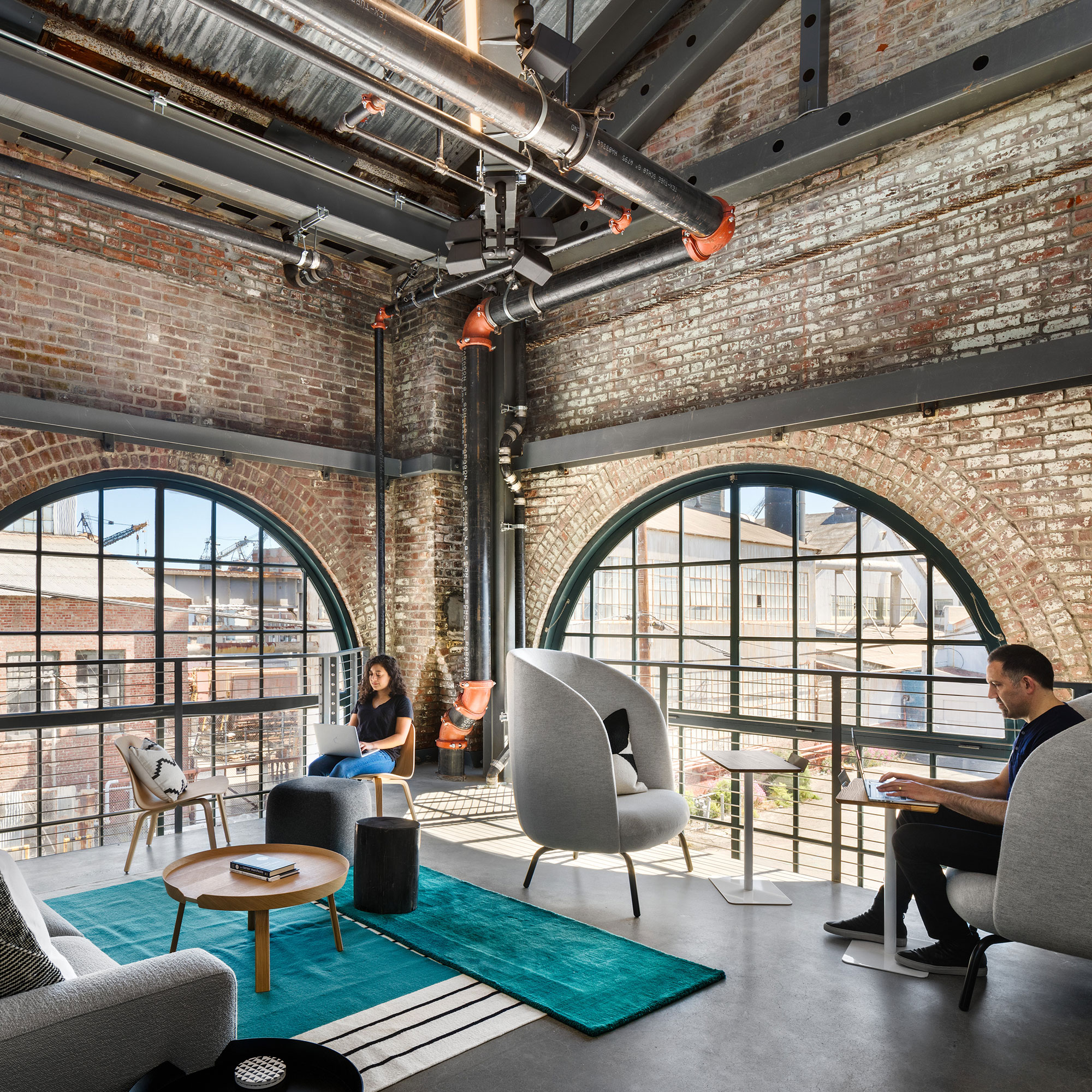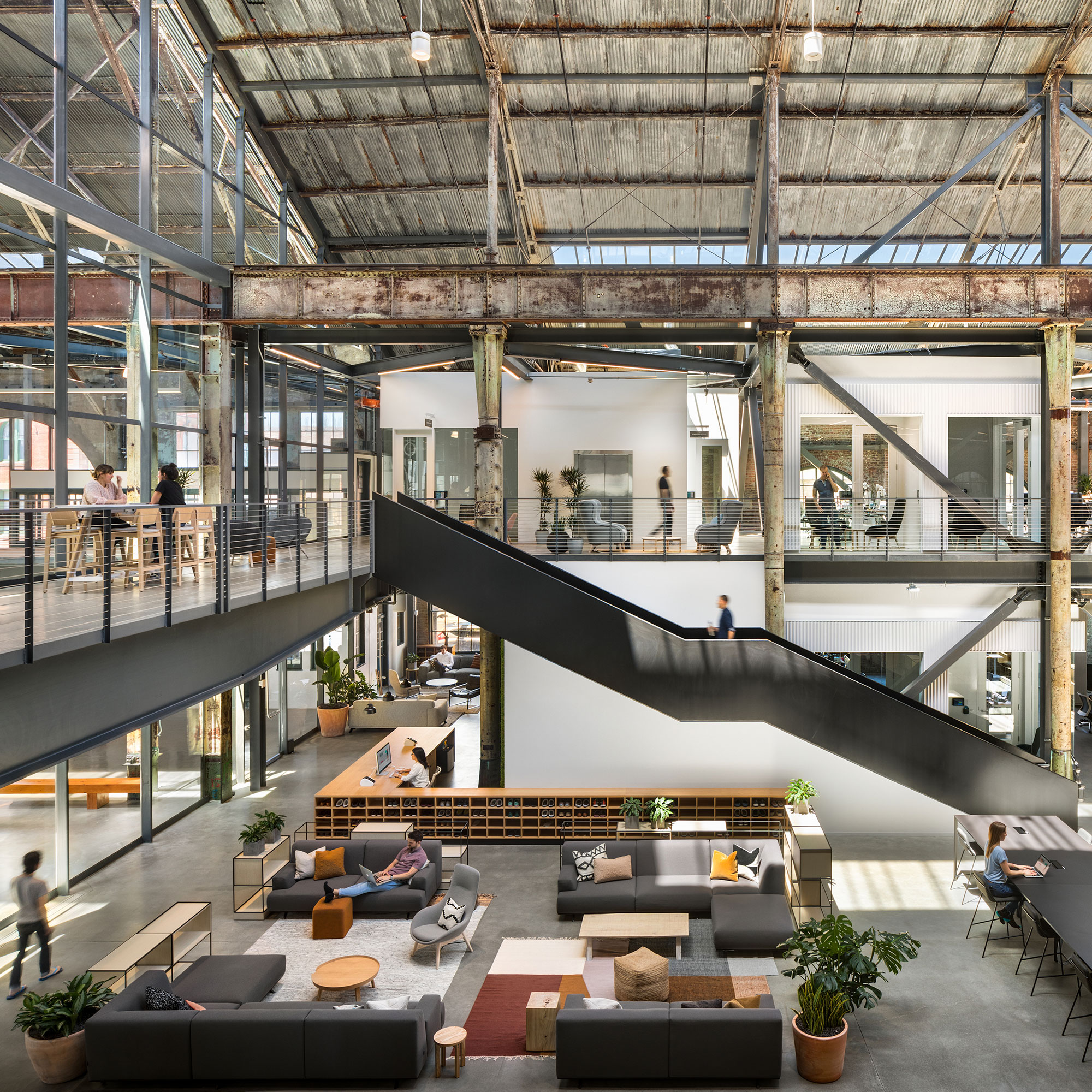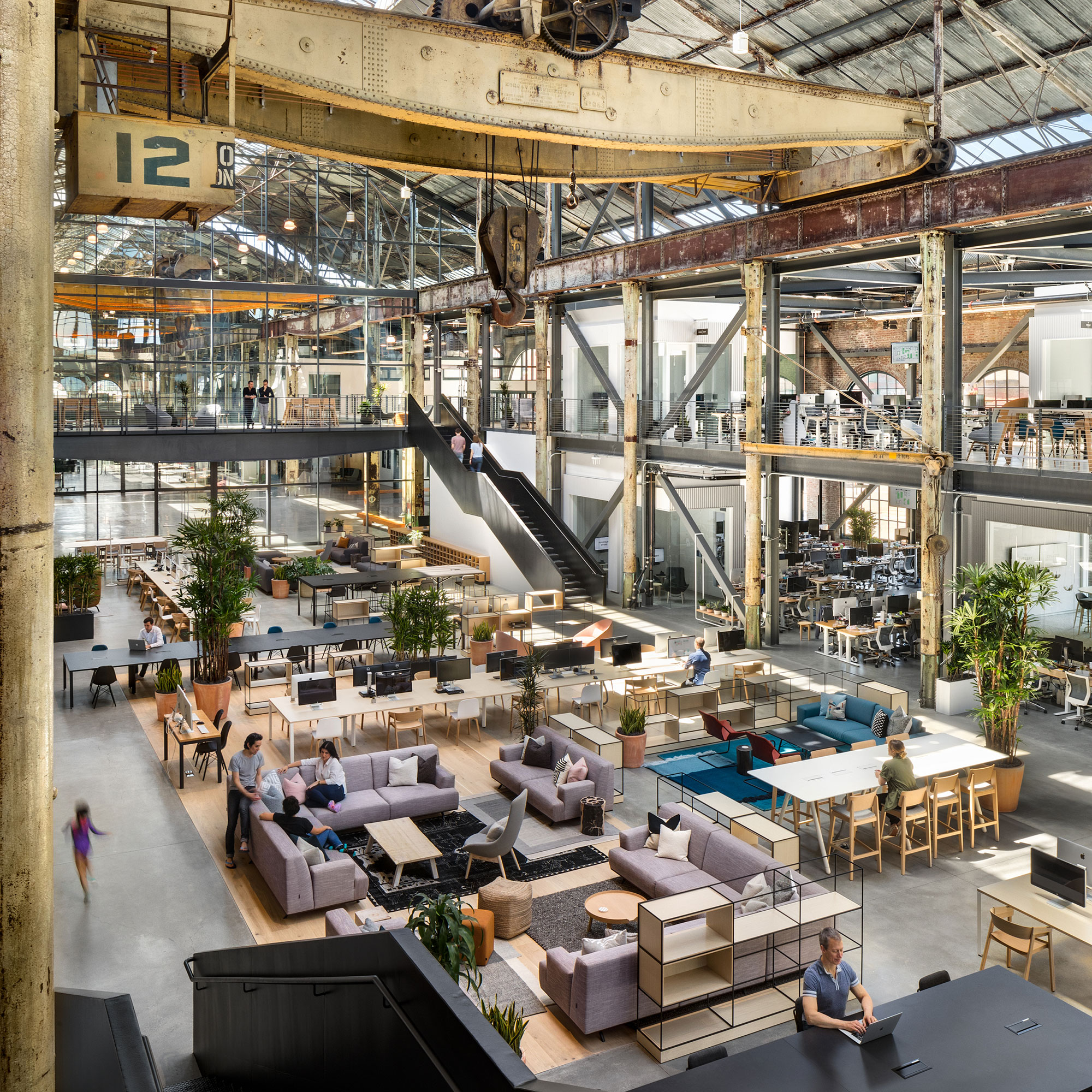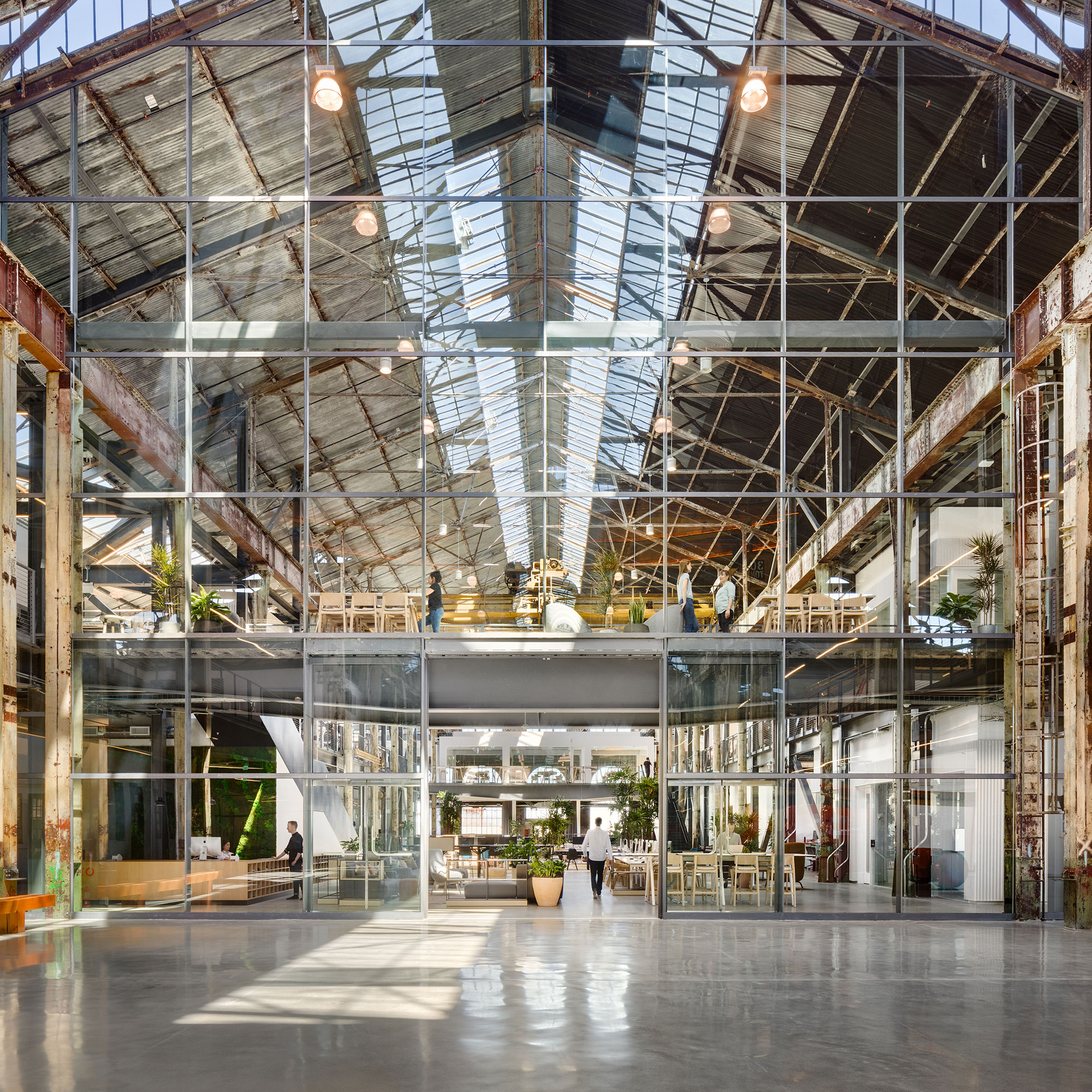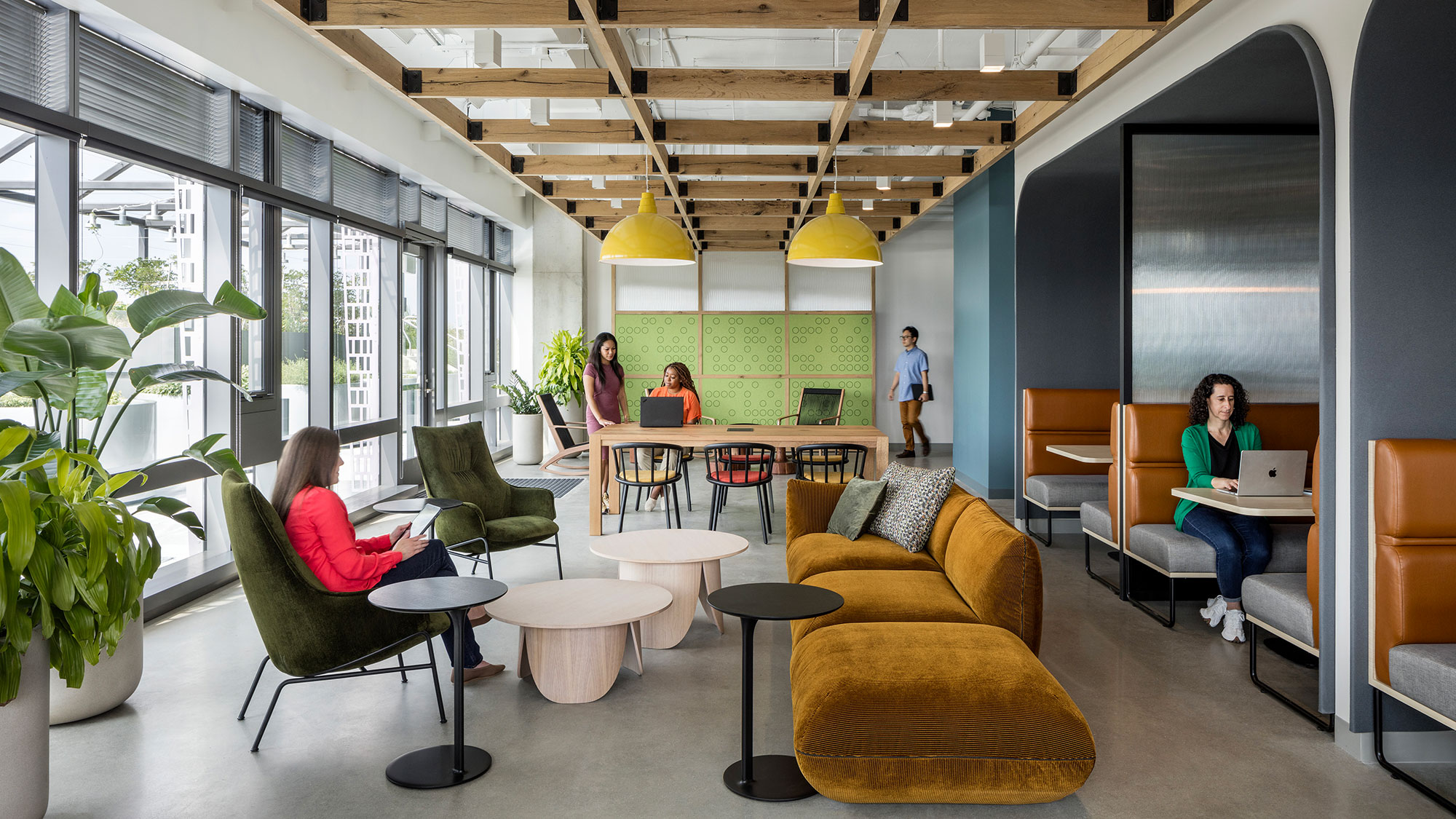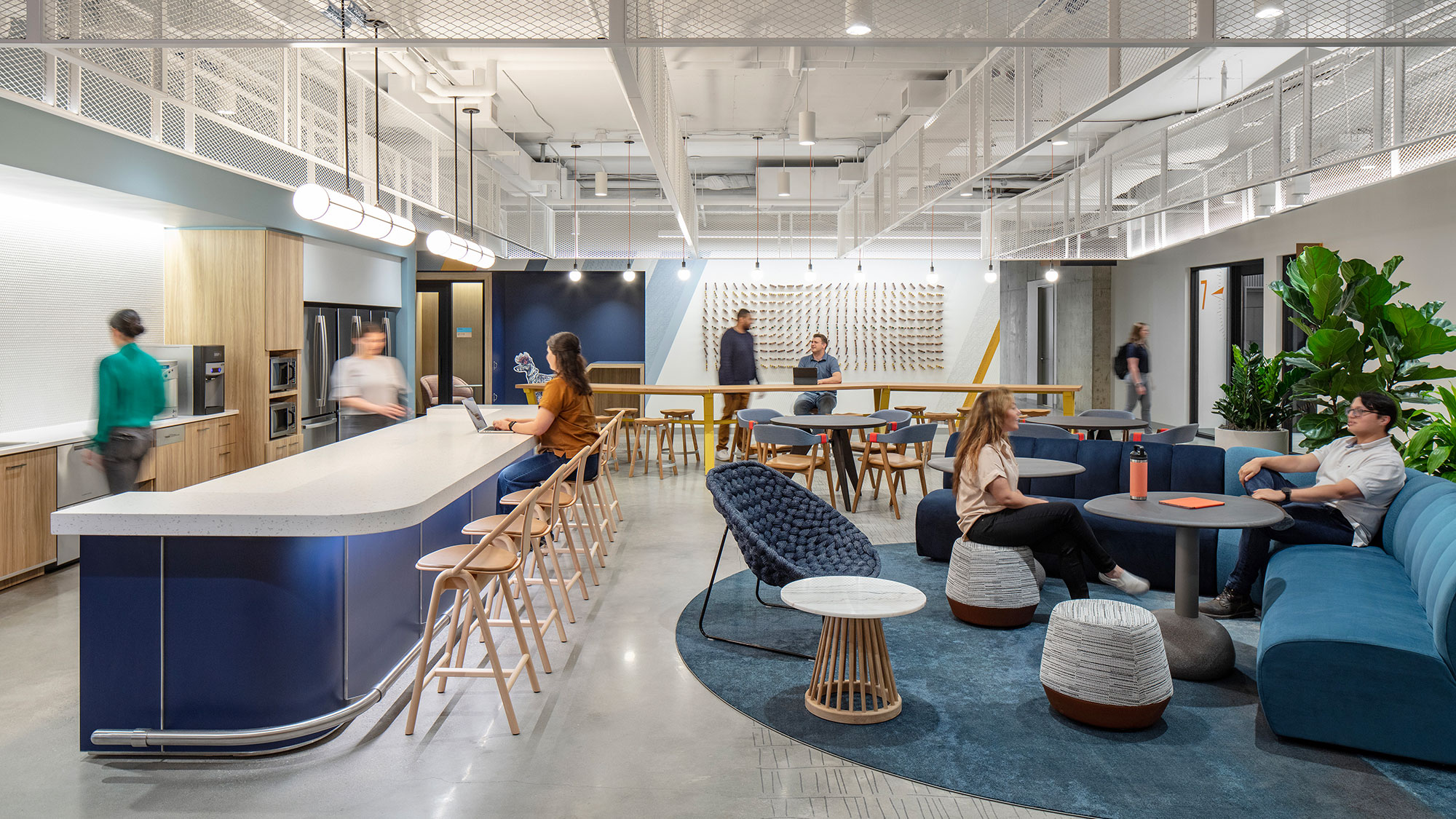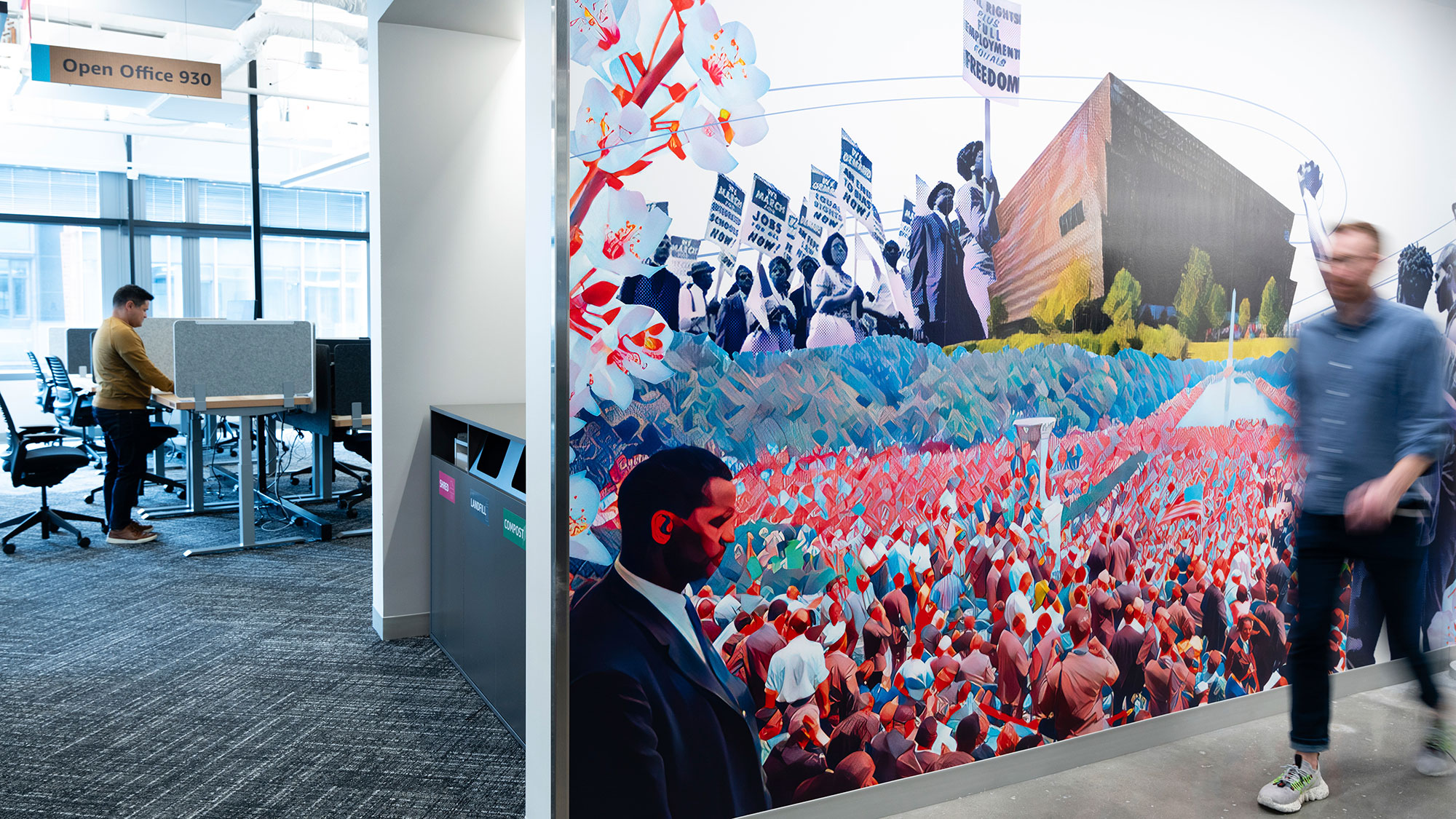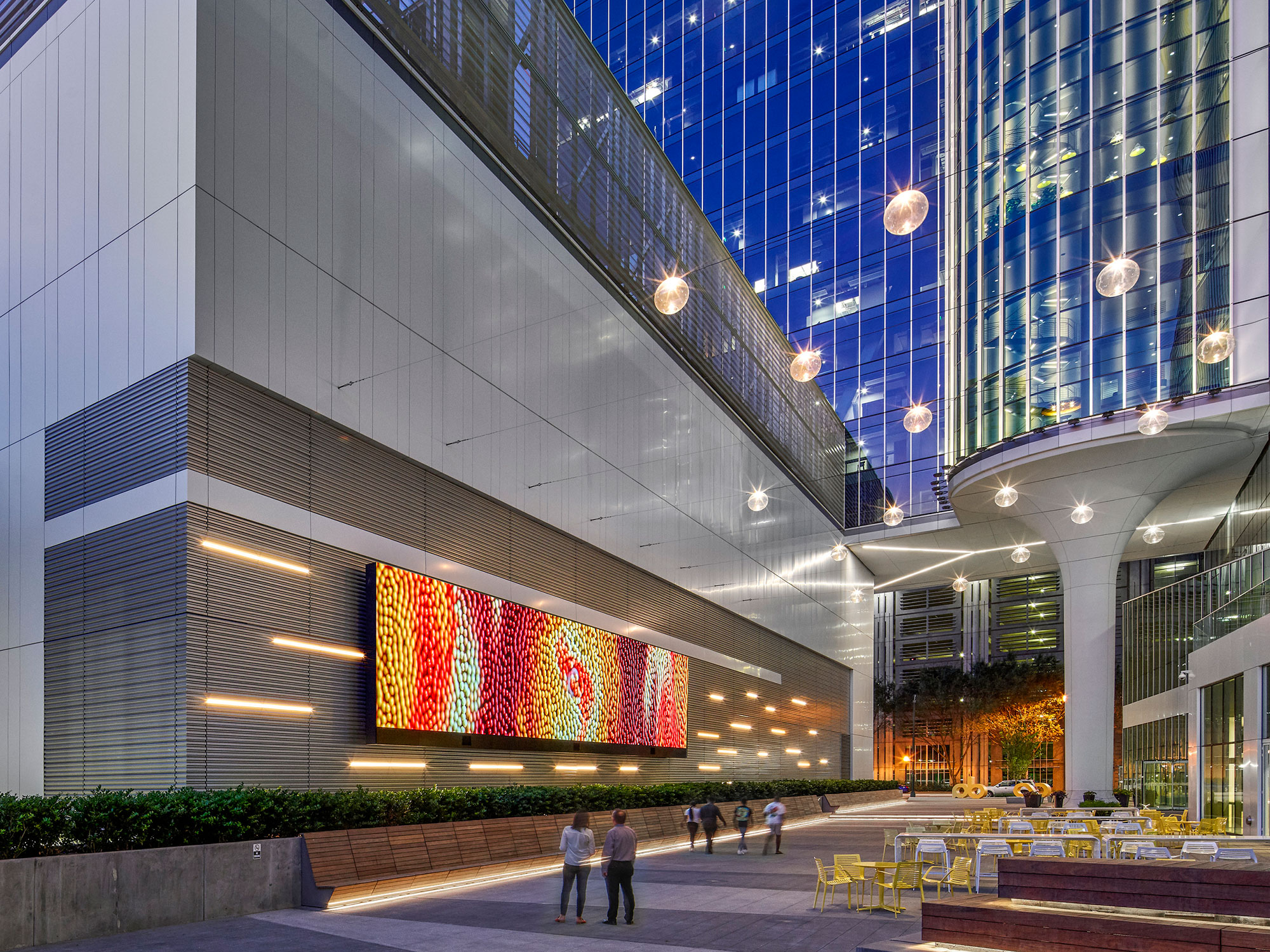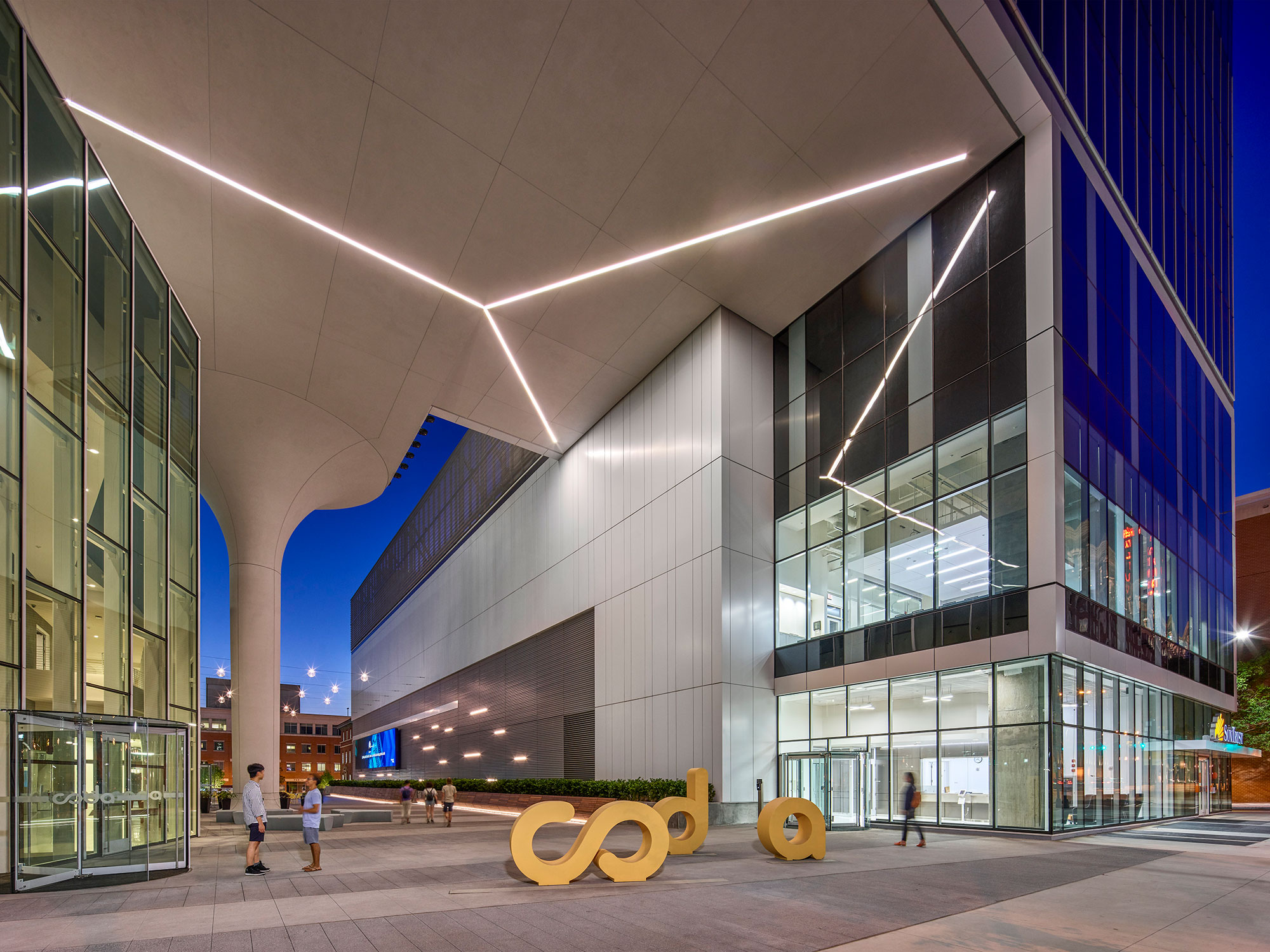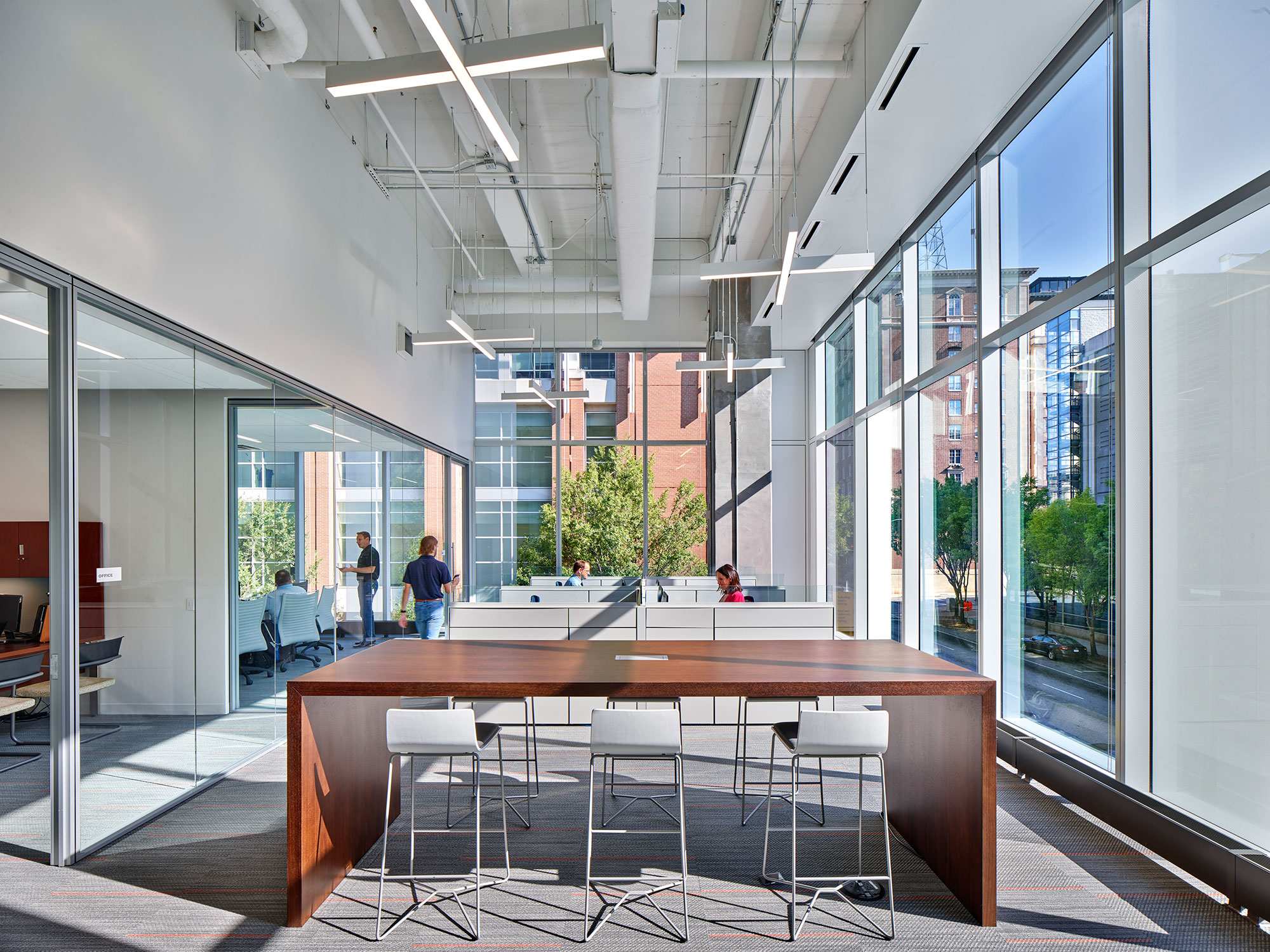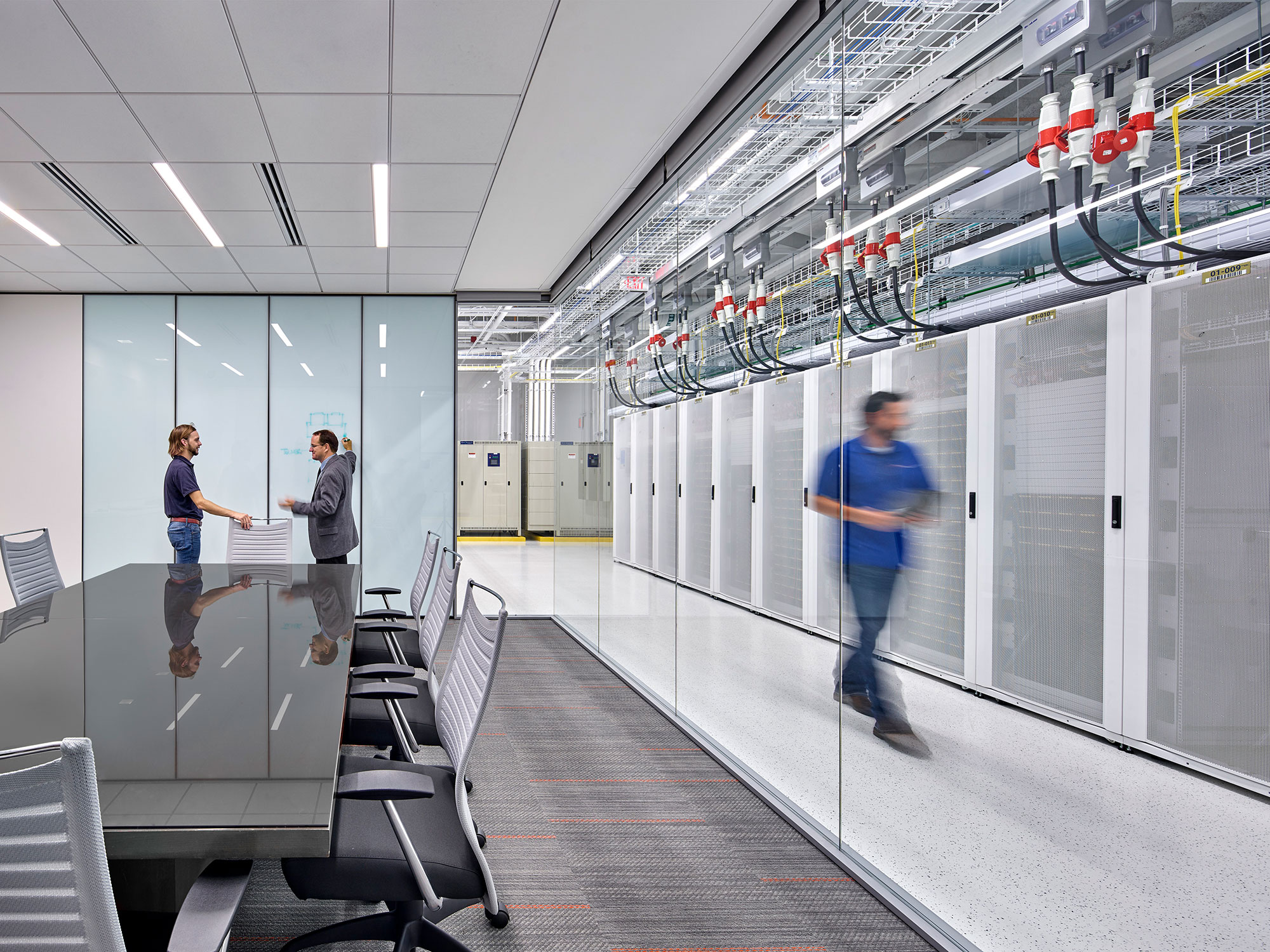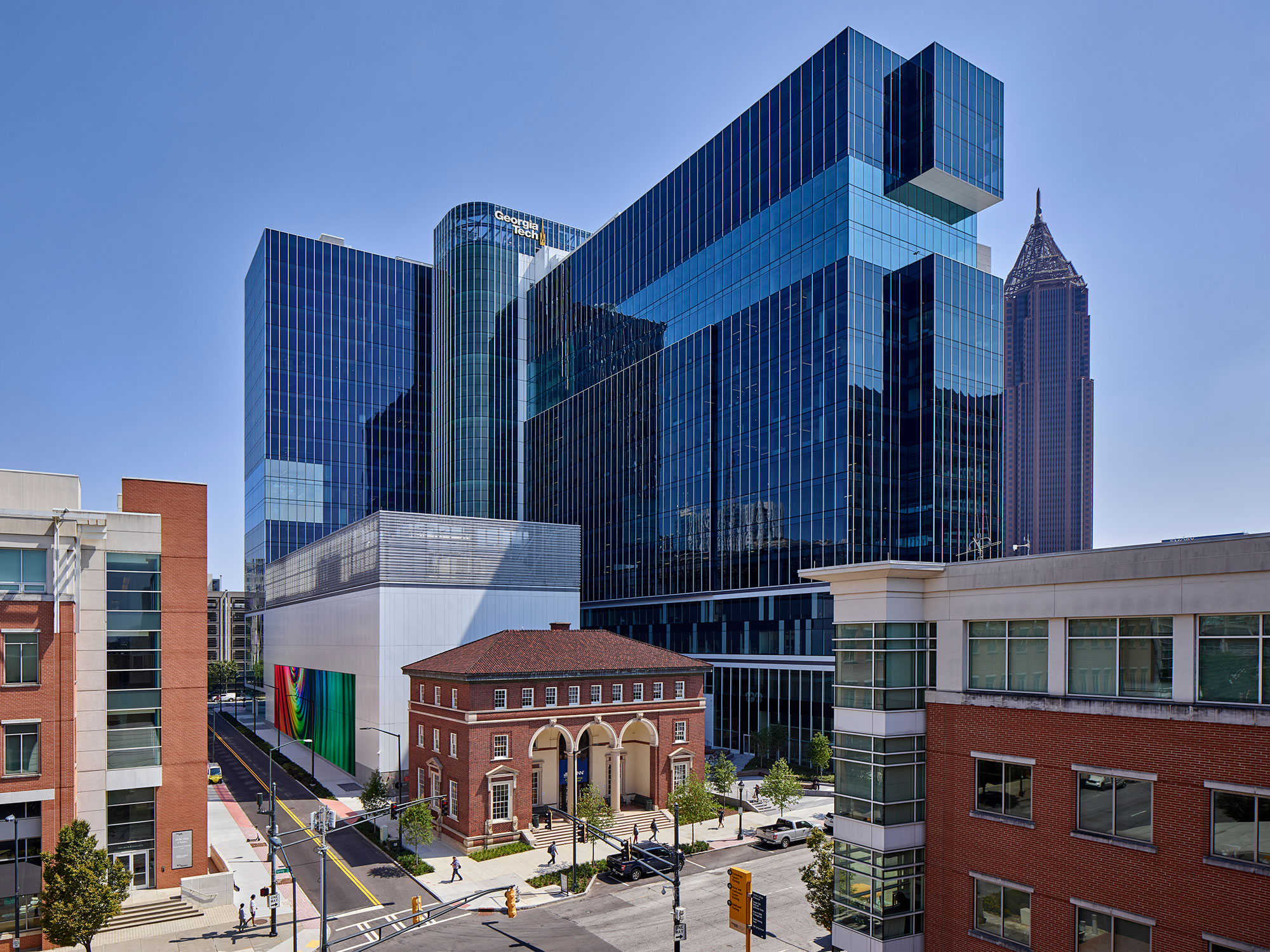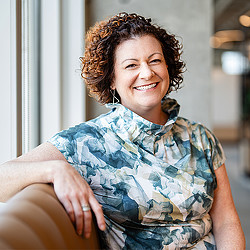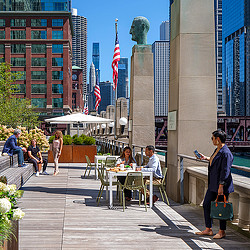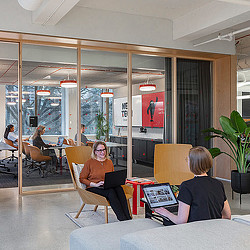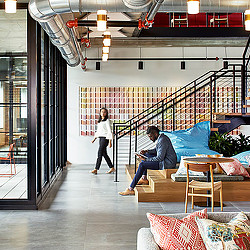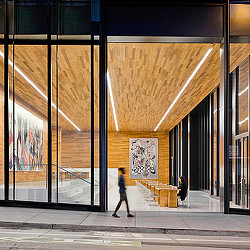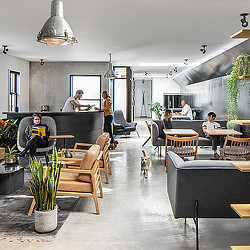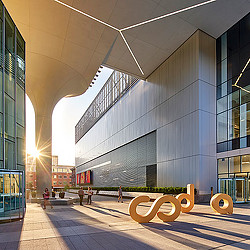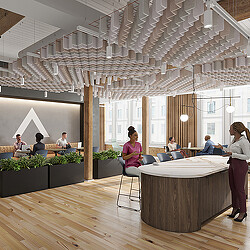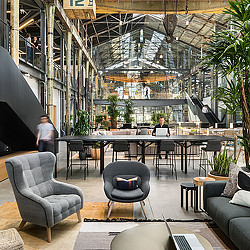Tech Is Broadening Its Impact by Embracing Communities
To appeal to top talent, tech companies have pushed their focus beyond their workplaces to embrace their surrounding neighborhoods.
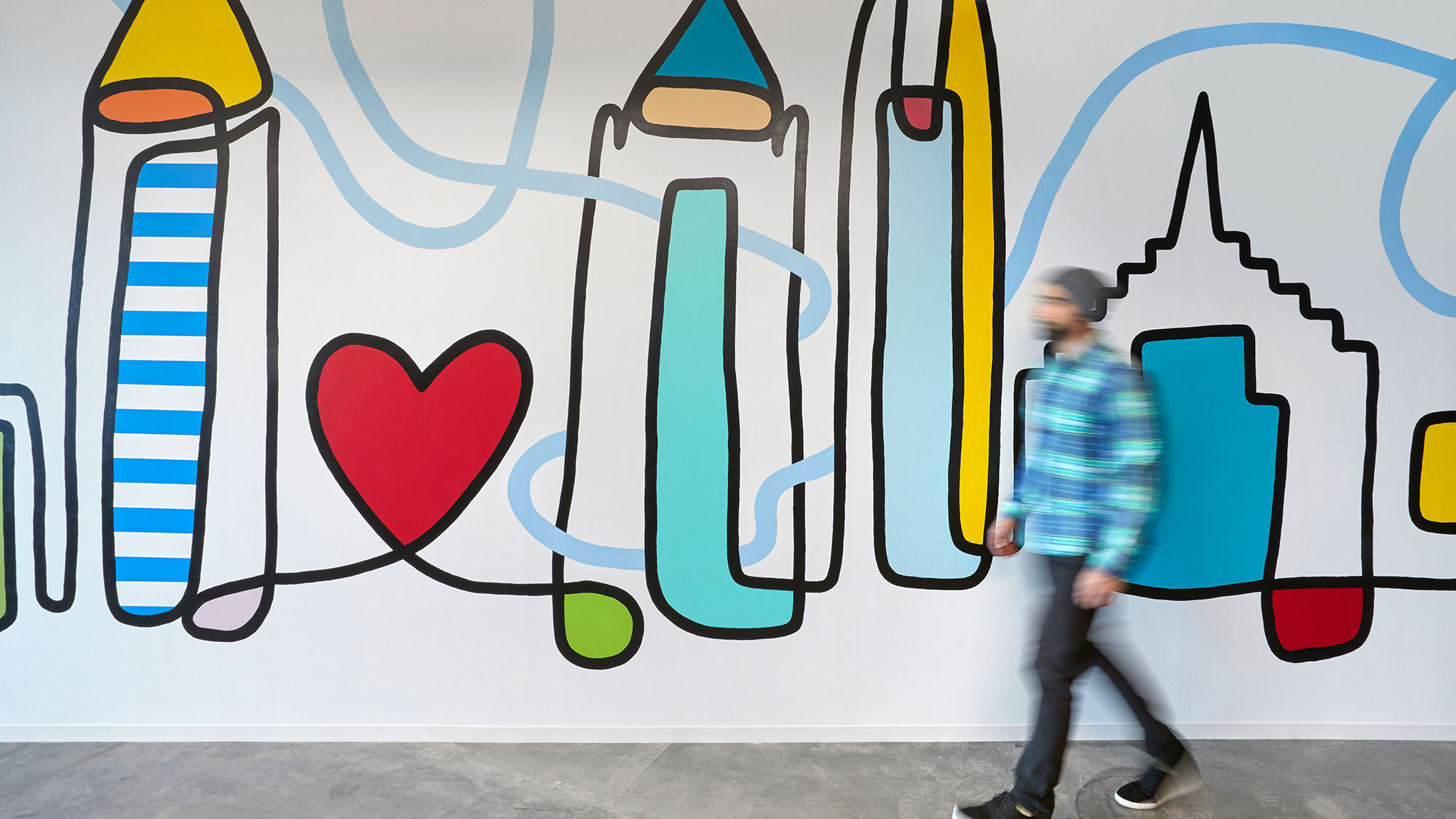
Tech clients have been on the forefront of workplace design for many years, investing in research and strategy to align their workplace with their culture in ways that inspire and support their teams and by creating amenity-rich headquarters that have everything workers need. Now, you may be thinking that tech firms have been right sizing their real estate and have laid off large numbers of employees, so why are we still talking about tech? And you would be mostly right, as broadcast across major media headlines. But if you’ve ever worked with a tech company, much less a tech entrepreneur, you know they are in constant states of flux, they never stop moving, and are often a step or more ahead, evolving at the speed of tech.
Tech companies remain focused on attracting and retaining the best, diverse talent and they have broadened their focus to new cities. Since it takes more than just a fancy workplace to appeal to top talent, they have pushed their focus beyond just workplaces to their surrounding neighborhoods. According to Gensler’s 2024 Global Workplace Survey, the best workplaces perform within an ecosystem both in and out of the office to provide effective work settings and great work experiences for employee success and well-being.
Recognizing that a great neighborhood is part of a great workplace experience, forward-thinking tech companies are embracing the communities they are becoming a part of. They are repairing, strengthening, and connecting to their communities by reimagining existing buildings, revitalizing neighborhoods, rethinking critical facilities and infrastructure, and creating resilient, responsible, balanced cities.
Revitalizing Existing Buildings
Once a machine shop for military destroyers and submarines, the former Union Ironworks Historic District on Pier 70 in San Francisco is considered one of the most intact industrial complexes west of the Mississippi. Pier 70 offers wide open access to the Bay. This patch of waterfront will be open to the public for the first time in over a century and will connect with San Francisco’s Blue Greenway and the Bay Trail.
Gusto’s office at historic Pier 70 tells a story about revitalization, community engagement, and business relationships. Gusto was the final tenant as part of a private/public partnership to revitalize Pier 70 into an integrated community of restaurants, art and maker studios, homes, offices, lab space, and retail. The design team carefully integrated sustainable, resilient practices, including mass timber construction, sea-level rise adaptation, urban heat island mitigation, job creation/preservation (Local Hire, LBE and First Source), and deep collaboration with the local community — all to help ensure the community can remain vibrant well into the future.
Rejuvenating a space for a purpose-built organization like Gusto, the design team drew inspiration from the living-room-like waiting areas of historic train stations that were translated into the larger-than-life living room where Gusties go shoeless for an unforgettable workplace experience. The design features old gantry cranes, lifts, pipes, beams, and roofing as an homage to the past and infused with employee-generated modern conveniences, such as heated floors, a no-shoes policy, and a 40-foot employee-painted mural honoring their customers.
The transformation of the formerly cavernous open space restored a part of San Francisco history, while reconnecting with the surrounding community to support an ongoing transformation of the waterfront. The project exemplifies how repurposing an existing building can be a tool for activating its surroundings in a sustainable way.
Revitalizing Neighborhoods
Crystal City is nestled south of downtown Washington, D.C. between the Pentagon and Reagan National Airport. A formerly sleepy business district that was home to many high security businesses, the neighborhood is being revitalized as the new home to Amazon’s HQ2, anticipated to bring 25,000 jobs to the area. Amazon’s mission is to create a place that not only serves its workers but the broader community, where anyone is welcome to bring their pet to the dog park, grab a coffee at Good Company Doughnuts & Cafe, or enjoy one of the open-air art installations in Met Park’s Central Green. By experimenting with resilience strategies, including new carbon-reducing cement mixes and sourcing power from a Virginia solar energy farm, the project is also a testament to Amazon’s Climate Pledge to reach net-zero carbon emissions by 2040. As part of a mixed-use community, the new headquarters is a shining example of the unique opportunity of collaboration between the public and private sectors, and demonstrates Amazon’s commitment to the surrounding community and expanded union with our nation’s capital.
Rethinking Critical Facilities & Infrastructure
Over the last 12-18 months, the data center market specifically related to AI has soared. AI is making data centers a critical component of resilient infrastructure for cities and communities. However, data centers have historically been shunned by urban and suburban communities alike due to their size and electrical and hardware demands.
Moving forward, the question needs to shift from “how do we keep data centers out of our communities” but rather, “how should the data center industry innovate their facility design to meet operational needs, minimize environmental impact, and maximize community benefit?” Much like electrical substations distribute power and water treatment plants deliver clean water, data centers enable access to the entire digital universe.
Innovative master planning will be increasingly challenged to integrate these critical facilities into mixed-use settings, including university campuses, residential, retail, and office complexes, and urban post-industrial manufacturing settings. The DataBank ATL1 Data Center on Georgia Tech’s campus brings together the public and private sectors to create a data center in the heart of Midtown Atlanta at the intersection of Georgia Tech and Atlanta’s thriving tech community. As demand for digital infrastructure outpaces supply, data centers could be another consideration for underused office buildings.
Responsible, Balanced Cities
Many cities are focused on creating vibrant downtown business districts. Gensler’s latest City Pulse Retrospective has been tracking complex shifts in urban life over the past several years. The four key themes that emerged include neighborhood design, employment opportunities, “big city” problems, and affordability challenges.
As the center of entrepreneurial activity for over 100 years, South Downtown Atlanta has some of the oldest remaining buildings in the city. The neighborhood is nestled between two public transit stations, the Atlanta University Center, Georgia State, Georgia Tech, the State Capitol, and the downtown entertainment district, including the MB Stadium, GWCC, Centennial Yards redevelopment, the Stitch, and the newly repositioned CNN Center. However, this district languished for many years until a German investor, Newport, invested in purchasing an approximately 15-acre portfolio with a high-density development vision. Late last year, Newport had to abort mission due to the historic rise in interest rates and pullback from lenders that continues to challenge the U.S. commercial property sector.
As the Newport portfolio was going into foreclosure, Atlanta tech entrepreneurs David Cummings and Jon Birdsong, partners in Atlanta Ventures, recognized the opportunity in transforming the district into a thriving, walkable startup community. Late last year, over a two-month span, Atlanta Ventures purchased the entire 53 building portfolio, breathing new life into the vision for a revitalized downtown.
Cummings and Birdsong envision a mix of new construction and historic preservation, with “a greater emphasis on creative doers and entrepreneurs from every corner of our city.” The Atlanta Tech Village pop-up, ATV Masons, has led to an influx of energy and vibrancy already visible in South Downtown and the efforts by the team to welcome everyone into the story being created is setting a new tone for the future.
Tech companies and entrepreneurs are coming together with the public sector to create meaningful change that can represent a new model for creating thriving, restorative, balanced cities. This new era of revitalization is confronting challenges head-on to reconnect communities and correct the wrongs of the past. In the words of Jay Bailey, the CEO for the Russell Innovation Centers for Entrepreneurs in Atlanta, “We have a once in a 100-year opportunity in front of us, and with it a responsibility that we cannot afford, nor do we have the right to fail.”
For media inquiries, email .
